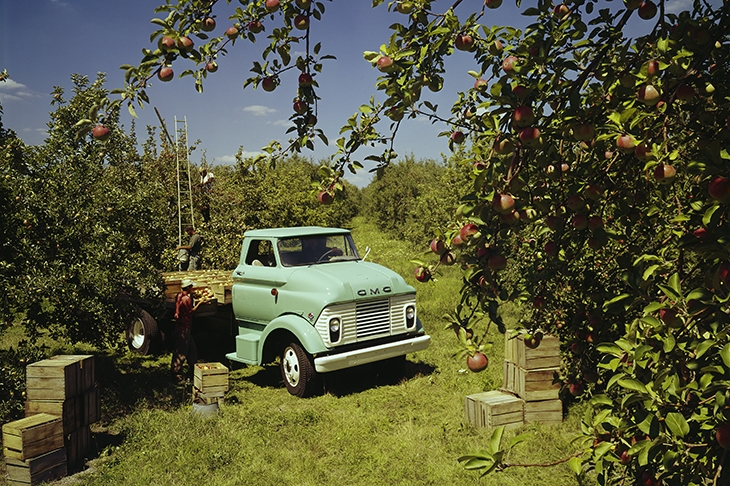Listening to Trees A Crowd, a podcast exploring the ‘56(ish) native trees of the British Isles’, solved one of childhood’s great mysteries for me. Why, when you plant a pip from one type of apple, does it grow into a completely different type of apple tree? The answer — one kind of apple tree will typically cross-pollinate with another variety to pass on a different set of genes — is less interesting than the next bit. Which is that if you do plant, say, a Braeburn seed, and it takes, you’re likely to end up with crab apples.
The reason, as explained on the podcast, is that the wild crab apple of Britain, Malus sylvestris, and Malus sieversii, an apple native to the mountains of Kazakhstan, are the ancestors of almost all domestic apples we eat today. Give your pedigree pip half a chance and it will attempt to revert. Little wonder crab apples have been credited with magical powers. Historically, lovers threw their pips on the fire and if they sizzled the relationship was hot but if they charred it was doomed. In Love’s Labour’s Lost, ‘roasted crabs hiss’, and in A Midsummer Night’s Dream Puck lurks ‘in a gossip’s bowl/ In very likeness of a roasted crab’.

Trees A Crowd is one of those podcasts that floods you with facts which you fear you’ll never remember, but actually do, mainly because you repeat them the moment the episode’s over to whomever’s unfortunate enough to be around. Did you know that the rare Whitebeam of Cheddar Gorge is under threat from goats introduced to the area to keep down the growth of other trees? Or that a considerable proportion of trees in some areas start life in cow pats? Did you know, did you know, did you know?
What makes the podcast so appealing is that there’s no obvious effort to make each episode adhere to a format. Some are 50 minutes long, others are just nine, though most of this series so far sit around the 15-minute mark. It is simply accepted that there is more to be said about cherries than blackthorns, and that with certain trees the interest lies with the science, and others more with the fables and superstitions associated with them. After a rather naff jingle, the discussion just rolls, very naturally, through the various features of the week’s chosen species.
Did you know that a considerable proportion of trees start life in cow pats?
The podcast is presented by the actor David Oakes, and although one couldn’t say for sure what qualifies him to discuss the genetics of trees, apomictic seed reproduction and subspecies, other than his name (the mighty oak was the subject of an earlier episode), he certainly sounds well-informed. A recent episode saw him travel to Glastonbury in pursuit of the twice-flowering hawthorn brought over by Joseph of Arimathea. It turns out that Crataegus monogyna ‘Biflora’ did grow here, at least until Oliver Cromwell had it set alight. Cuttings survived but have frequently been targeted by vandals. Pilgrims to Glastonbury today can buy a ‘holy thorn bush’ for £30, which is about the price one paid in 1722, and considerably less than a ticket to the music festival.
Radio 4 had a short documentary last week on Parson’s Pleasure, the splendidly named former bathing area of the River Cherwell in Oxford, where dons, vicars and milliners used to tumble about in the nude. It closed in 1992, with the university authorities expressing fears over being liable if there was an accident at the site, but as cultural historian George Townsend insinuates in this programme, its reputation as a gay cruising pond had endangered it from early on.
Some of the past visitors to the Pleasure sound defensive in the crackly clips played from old interviews. ‘It’s not a club, it’s simply a facility provided by the university,’ clarifies one, who was introduced to it by his Oxford college tutor. Another would ‘rather not’ give his name. Parson’s Pleasure was in fact popular with all sorts of people, from William Morris to C.S. Lewis and the occasional puntful of blushing ladies, but it was the gay community who made it their own.
It’s difficult to evoke a place in just 12 minutes, but the young presenter and producer of The Bathing Place, one of the winners of the Charles Parker Prize for student radio, do a lovely job beneath the spires of the city. A foray into Dame’s Delight, the ladies’ equivalent swimming spot, would not have gone amiss.






Comments